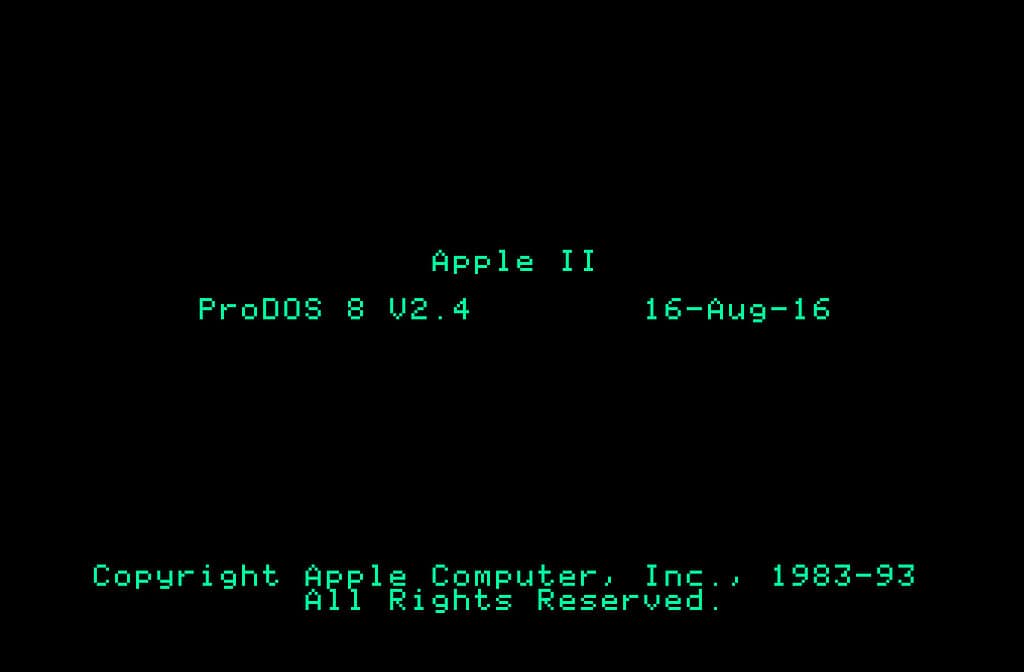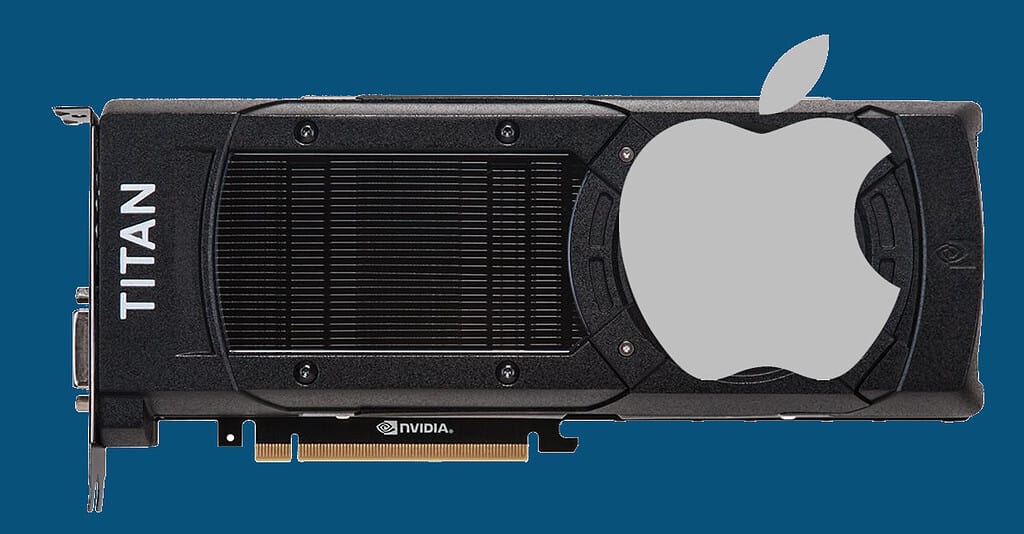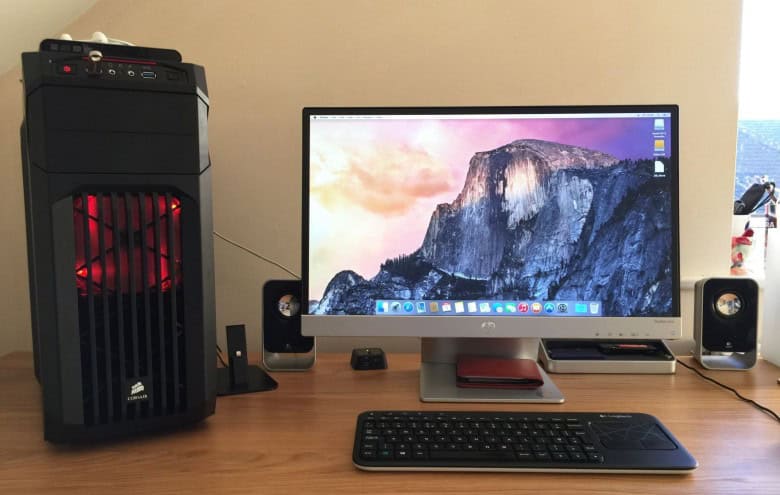There’s no question that money is a high entry barrier to the Apple ecosystem. The company’s devices are admittedly more expensive than its competitors on the market, with heated debates about the price difference being justified. If you’re a macOS fan short on cash, there’s an alternative: Hackintoshes.
Due to technical specificities, it’s nearly impossible to run iOS and iPadOS on something that isn’t, respectively, an iPhone or iPad. Mac, on the other hand, was for some time very similar, hardware-wise, to other computers. Therefore, it’s possible to run macOS on a machine not made by Apple, which is exactly what a Hackintosh is.
But the question arises: should you? Here’s what to consider if you’re interested in building a Hackintosh.
A Bit of History: Hackintoshes (Kind of) Predate Macintoshes

Back in the day, computers running Apple’s OS but made by other companies were known as “Apple clones”. “Cloning” was actually a widespread practice in the 1980s: companies built machines “compatible with” Operating Systems (OSes) made by others. To some extent, today’s computers wouldn’t exist without it.
Apple, for a short time, even licensed the then-called Mac OS to other manufacturers. The company was having financial difficulties in the 1990s, and this was a way to make some quick money. When it started using Intel processors, which powered most computers, people hacked Mac OS to run on non-Apple hardware almost instantly.
That’s to assure you the Hackintosh concept isn’t by any means new. Apple came up with ways to make the process harder, like the T1 and T2 security chips. People were able to circumvent these measures nonetheless, and, actually, making a Hackintosh nowadays is easier than ever.
If you want to know more technical details, we have an article explaining what a Hackintosh is. Below, I’ll help you whether you should build one of those
Why Would I Want a Hackintosh?
Simply put, it’s a way to run macOS without having to pay the premium over a similarly-specced competitor. Upgrading, e.g., a Mac Studio RAM (32 to 64GB) costs $400, thrice as much as a 32GB DDR5 stick.
Also, as the years passed, Apple has made its computers progressively less upgradable. Presently, only Mac Pros can get additional internal storage after purchased, and even those have soldered processors and RAM. Other than that, there are only two ways of running an up-to-date macOS and having replaceable components. You either have to use an old Mac with OpenCore Legacy Patcher or build a Hackintosh.
Are Hackintoshes Worth It? What To Consider

The short answer — like most tech stuff — is it depends. If you have free time, the disposition to learn, and are willing to spend hours tweaking settings, then yes.
If not, it’s better to shell out the cash for an official Apple device. A base model Mac Mini with educational savings costs $499. If you need a laptop, an M1 MacBook Air sets you back $699 at Walmart. Brand-new, they have additional Apple goodies, like a warranty. Used, they cost even less, and retain features such as build quality and compatibility with future macOS versions.
How Future-Proof Is a Hackintosh?
That’s an entirely different topic to discuss. Hackintoshes are a dying breed. That’s mainly because, akin to the transition PowerPC-Intel transition, Apple is now moving to its own Apple Silicon processors.
They Will Eventually Stop Receiving macOS Updates
Apple Silicon uses chip designs created by ARM, which also licenses them to other companies. However, ARM designs are only the first step, and each company customizes its processors differently. Apple doesn’t license macOS, so it doesn’t need to support chips made by other manufacturers.
Even before moving from PowerPC to Intel, there were always computers with similar CPUs to those from Apple. That’s what allowed for the early Apple Clones. With Intel chips, “Hackintoshing” became easier, but Macs had never had exclusive CPUs — until the Apple Silicon.
As of Sonoma (released in 2023), macOS supports Intel Macs announced in 2018 or later for most lines. Up until Monterey, the cut-off used to be six years. This may be regarded as rushing to ditch support for Intel processors, though Apple doesn’t comment on the matter.
At this rate, macOS may drop support for Intel Macs entirely by version 16 (2025) or 17 (2026). Apple also usually provides minor updates for the three more recent OSes. Therefore, one can expect Hackintoshes to stop receiving new features in a couple of years. Security patches, bug fixes, and stability improvements might cease by 2028 or 2029.
To be fair, that’s a lot of “ifs”. A few Intel Macs are way more capable than some Apple Silicon computers. The maxed-out 2019 Mac Pro, for instance, outperforms any current iMac, Mac Mini, and MacBook Air. Only the M2 Ultra Mac Pros and Mac Studios and the M3 Max MacBook Pros are more powerful than it. Whether Apple will consider this enough to keep supporting Intel Macs for a few more years is up to debate.
It May Be “Too New” To Run macOS

Related to the above is that Hackintoshes, too, have limited upgradability. New OS versions introduce features that require more powerful computers. That’s why purchasing newer parts is one of the ways of fixing a slow Mac. What happens, though, if one has hardware “too advanced” for an OS to support?
That’s what some Hackintosh owners have to deal with. My main computer, for instance, is an Acer Nitro 5 from 2019. Its i7-9750H CPU is supported by macOS — it’s the same one used in the last Intel MacBook Pro. Its NVIDIA GTX 1650 graphics card, though, is not. GTX 900 and 1000 series cards are only supported until High Sierra, and no NVIDIA GPU from the 1600 onwards can be used with macOS.
My way to fix this was to disable the NVIDIA card and run macOS solely with my processor’s integrated GPU. It’s an Intel UHD 630, intended for basic tasks, but I regularly use five simultaneous screens and it holds. If I want to play more demanding games, I just boot Linux or Windows instead.
However, even iGPUs stop being supported at some point. From Intel’s 11th generation of processors onwards, you’ll need a discrete graphics card to run macOS. Otherwise, you’ll lack hardware acceleration and your system will be unusable.
AMD cards, both discrete and integrated, fare better. There’s a specific guide to AMD Hackintoshes by ChefKiss, which lists supported processors and GPUs. It also outlines some limitations of these components, like incompatibility with recent virtualization apps.
Hardware Is More Than Just Performance
Lastly, for this part, remember that it’s not just about how fast a computer runs macOS. Apple’s hardware has other advantages (and disadvantages, like the aforementioned upgradability) over the competition.
One thing that varies widely among Hackintosh is power management, especially on laptops. Some people report better battery life on macOS than on Windows, but my Hackintosh barely gets me through an hour. Since macOS handles energy systems differently, temperature sensors and internal fans may need some tweaking, too. A common tip is setting this up using your computer’s UEFI settings, but this isn’t always possible.
There are also the things that just work and the things that simply won’t work. And I’m not even talking about graphics cards: my Wi-Fi works just fine, but my Bluetooth doesn’t. What’s weird is that they’re both a single hardware part. Also, my built-in keyboard and trackpad worked so erratically, especially compared to actual Macs, that I disabled them entirely.
Similarly, displays on MacBooks and iMacs are known to be of top-notch quality. An entry-level gaming laptop turned Hackintosh may perform as well as a MacBook Pro, but its screen may have way worse color accuracy or contrast.
That’s not to mention build quality. You may be, for example, fond of a Plexiglas desktop case with RGB lighting. However, any recent Mac will likely last longer and look better with its aluminum body.
Hackintoshes Come With a Community

I have never found myself left needing help with macOS in general. Apple’s own support forums, but also many other places (virtual or physical), provide guidance for new and seasoned users alike. Instructions on how to find specific settings, app recommendations, bug fixes, you name it.
Building a Hackintosh only adds to that. There are a few online communities, from Reddit to Discord to dedicated forums, with people (usually) willing to help newcomers. Just remember to read the rules and provide the required information, like detailed hardware specs, beforehand — people might be rude otherwise.
And that’s qualified help. I have met a few dead-ends with error messages because I could only find users as lost as me. Even people willing to help can’t do so if they don’t know how. Hackintosh users, on the other hand, often end up having to find a solution by themselves, but document that afterward.
Using a Hackintosh Is Like Using a Mac on Steroids
I have used Apple devices for almost 15 years now. At first, I turned to Hackintoshes because Macs had become too expensive. Not just to buy, but to maintain as well: my 2009 White Unibody MacBook has seen no less than eight different chargers before retiring in 2016.
I not only found a way to run macOS on the cheap. I found a better way of being a Mac user. That means I got more conscious of the things I love about Macs, the things I hate about Macs, and the things I love about Macs but hate about Apple.
It’s sad that Hackintoshes won’t be around for much longer — compared to their decades-long existence, that is. There’s still time, though, to get one for yourself, it’s an experience I definitely recommend to any Mac user. The things you’ll learn will stay with you long after Intel Macs become a thing of the past.

Excellent take! Especially how you “found a better way of being a Mac user.” End of an era.
I can’t deny, e.g., Macs (specially MacBooks) used to have better build quality than competitors on the same prace range (nowadays they still have good quality, but the competition upped their game). There were other advantages as well, like the MagSafe connector, screen quality, and so on.
However, being able to use macOS on non-Apple computers brings a sense of community, people who love the software so much they’re willing to spend hours (or months, if we think of OpenCore’s — and other booloaders’ — developers specifically) trying to figure out the minutiae of how things work just so they can have macOS up and running on machines made by other companies. That’s the kind of passion you don’t see every day.